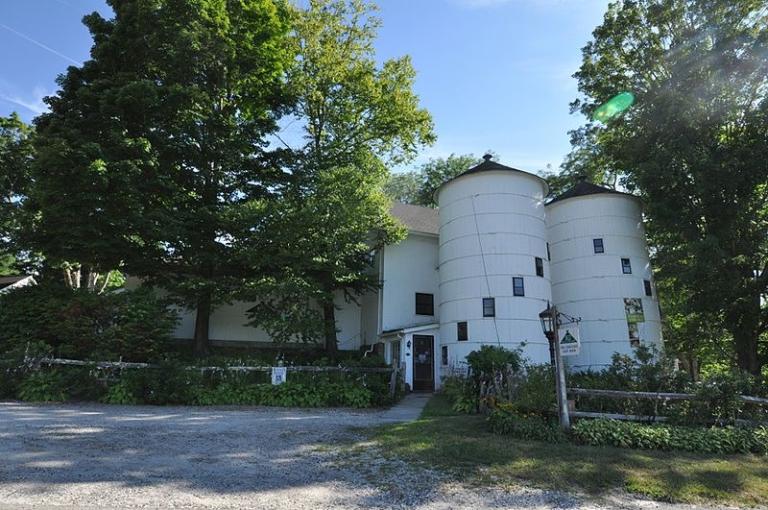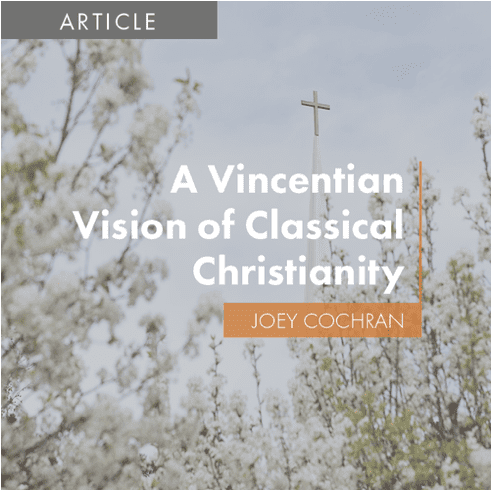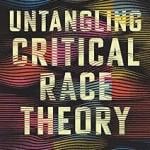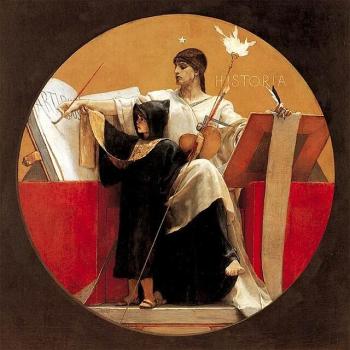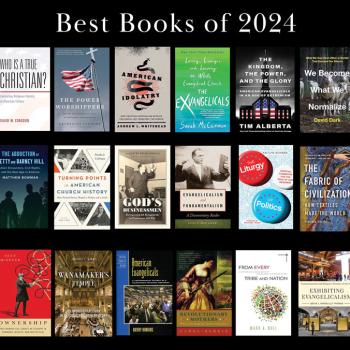W. E. B. Du Bois conveyed the notion of double-consciousness in his essay “Of Our Spiritual Strivings,” which is the first chapter in a collection of his essays called The Souls of Black Folks. He said:
It is a peculiar sensation, this double-consciousness, this sense of always looking at one’s self through the eyes of others, of measuring one’s soul by the tape of a world that looks on in amused contempt and pity. One ever feels his twoness,—an American, a Negro; two souls, two thoughts, two unreconciled strivings; two warring ideals in one dark body, whose dogged strength alone keeps it from being torn asunder. The history of the American Negro is the history of this strife,—this longing to attain self-conscious manhood, to merge his double self into a better and truer self…He simply wishes to make it possible for a man to be both a Negro and an American, without being cursed and spit upon by his fellows, without having the doors of Opportunity closed roughly in his face. (p. 2)
This has long been the dilemma for people of color. While they have made modest gains over the last dozen decades since this essay was published, they still have a great ways to go in their striving to reshape this world to understand their dilemma and achieve the rights to realize their truer self. One of the obstacles in their way is the silo of white evangelical single-consciousness.
The silo of white evangelical single-consciousness is that state of being for white evangelicals, who don’t just center their white evangelical reality as reality, but they only see their white evangelical reality as reality. Their view of the world is not merely centered on white evangelicalism, but white evangelicalism is all they see, hear, smell, taste, and feel. When they sense something other, they get discomforted, maybe even disgusted. By all means, it’s a worldview disorder created by systems structured to silo white evangelicals from other ways of sensing the world. This silo breeds forms of intellectual, social, and emotional white evangelical supremacy.
This post is a bit of a departure from the normal mode by which I typically contribute to the Anxious Bench. Rather, this is a sort of memoir about my professional and vocational past. It’s a narrative of how I discovered my blind-sided white evangelical worldview and the reformation moment that occurred to correct that blindness. This is a recount of how I recognized I lived in a silo of white evangelical single-consciousness.
Revisiting A Vincentian Vision of Classical Christianity
I recently wrote an article entitled “A Vincentian Vision of Classical Christianity” for a series on “The Christian Virtue of Hope” with The Center for Pastor Theologians (CPT). This series intends to emphasize the role the Christian virtue of hope might play in revitalizing evangelicalism in our era, and the series spotlights the centers upcoming CPT Conference “Reconstructing Evangelicalism” (Oct. 24–26, in Chicago at Calvary Memorial Church, Oak Park).
The conference will include contributions from historians like Kristin Du Mez (former Anxious Bench contributor), Malcolm Foley (current Anxious Bench contributor), Doug Sweeney (Dean at Beeson Divinity School), and Mark Noll (eminent historian retired from Wheaton College and Notre Dame). Likewise, scholars from other disciplines and other public intellectuals or clergy will contribute to the conference, including: Elizabeth Conde-Frazier, Emily Hunter McGowin, Karen Swallow Prior, Love Sechrest, Kaitlyn Schiess, Vincent Bacote, Carl Ellis, Jr., Walter Kim, Russell Moore, Gavin Ortlund, and Kevin Vanhoozer.
When I wrote this article for CPT, I made a few self-conscious moves that I knew I would need to vindicate at some point, and I’ve chosen to use one of my Anxious Bench posts to do so. It’s fitting to do so over here on the Anxious Bench because the shift in media content and medium contributes to telling the story of how my evangelical mind has developed, how I realized I lived in the silo of white evangelical single-consciousness.
Many who are not as familiar with my backstory will be unaware of my intimacy with the Center for Pastor Theologians and Calvary Memorial Church. While I spend most of my time now at Wheaton College, teaching college students about Atlantic World history, managing media and events for The Conference on Faith and History, and manage editing for the Anxious Bench—I have a past life where I was a pastor. As a fellow of the Center for Pastor Theologians, twice a year I return to my vocational home, if you will, by attending the CPT conference in the fall and my CPT fellowship in the spring.
CPT is hosted at Calvary Memorial Church, not 10 minutes from my home in North Riverside. That’s not incidental. From 2015–2018, I was a pastor at Calvary Memorial. There is a deep bond between CPT and this church. Much of the pastoral staff from Calvary function bilaterally for CPT and help lead the center. A lot of my vocational, social, intellectual, and spiritual developments during the formative time of my doctoral studies at Trinity Evangelical Divinity School took place while working at this church. Calvary is a diverse church with diverse leadership surrounded by a diverse community. CPT aims for diverse inclusion and representation and aspires for that to be reflected in it leadership and fellowships.
When I wrote my recent essay for CPT, I wrote it with an imagined self in mind, one prior to many personal developments that have taken place within me. That self is what some might call a “pre-woke self”—a white, male, privileged, suburban self that only knew and navigated that homogeneous world. In other words, I wrote that essay from the standpoint of when I was siloed in my white evangelical single-consciousness.
If you go back and read that article at CPT, you’ll see a budding historian that is conversant with a white, whiggish, history of Western Civilization and evangelicalism: one that cannot look beyond the hegemony and authority of other white men of intellectual influence; one that seems to be completely unaware of race studies, gender studies, and scholarship from people, who are either of color or women. The whole and extent of that article’s intellectual reality is a white reality.
Hence, you will read an article that champions the thought of a white, gallic monk and saint, Vincent of Lerins—whose vision of Christianity is picked up by two modern-day white, male, evangelical saints, Carl F. H. Henry and Mark Noll. This vision is corroborated by recent scholarship from another white, male scholar of evangelical Christianity, John G. Stackhouse, Jr., and I round out the silo of white evangelical single-consciousness with my own vigorous support for this vision.
I’ve read numerous articles like mine about the crisis of evangelicalism, all written by white, evangelical men, who diagnose and set an agenda for how to stabilize evangelicalism, by citing and supporting their views, alongside the views of other white, evangelical men. The problem is that it’s all achieved from the silo of white evangelical single-consciousness.
The “pre-woke self” who wrote that article intended to reach a particular audience, one who only knows the white silo of single-consciousness. That self fabricated a scaffold for white evangelicals reading that website to climb onto and behold a vision far better than the one that has been. The vision is right, but the media and mode of the argument is siloed.
And let me be clear about this. The arguments I cited in that article are sound and the scholars I relied on are outstanding scholars and people. They are valuable contributors that need to be listened to, but not siloed apart from the dialogue of a rich and vibrant collection of other voices.
You see, the problem is derived from when siloed white evangelicals live in a world that privileges only their white evangelical authorities, and they become suspicious and skeptical of sources outside the silo of white evangelical single-consciousness.
I have now brought attention to this silo and addressed it through a sample of my own work. Why did I do it this way? I felt like it was better to create my own sample and tear it apart, rather than go after someone else’s demonstration of the silo of white evangelical single-consciousness. First, it seemed like a polite way of going about it when I conceived the whole scheme last month. Second, while some people are perniciously siloed into their white evangelical single-consciousness, others are siloed by ignorance. The latter have simply never tasted and seen a better world. This is a gentler way to point out the flaw of being siloed to that latter group. There will be another time to seek justice against those who wickedly silo themselves off into white evangelical single-consciousness.
A Dramatic Spiritual Alteration and Core Memory
The thing is I’m just not that person anymore. I’m no longer siloed in my white evangelical single-consciousness. I know how to speak that language. I know how to address that audience. But something happened while I was a pastor at Calvary that altered me. A sort of conversion occurred. Some might cheekily or derisively call it an awokening.
It’s significant to note that the contexts of doctoral studies at Trinity Evangelical Divinity School, ministry at Calvary Memorial Church, and participation with the Center for Pastor Theologians contributed to discovering how I had been siloed in white evangelical single-consciousness. Proximity to diversity in my community and at church, exposure to employment of diverse scholarship in doctoral studies, and the values of inclusion and representation at CPT prepared me for what I was about to realize about my past.
What happened is I discovered that I had long been in the silo of white evangelical single-consciousness, and I would finally perceive how myopic that vision is in comparison to one that is far more rich and vibrant. There is a way of sensing the world from outside that silo, a way of living that benefits from a spectrum of views and perspectives from people of color and women from all over the world. In other words, I had a moment where the Vincentian vision I knew shifted from an esoteric world of white, privileged, suburban Western Civilization to one that beheld and sympathized with the oppressed, disinherited, displaced, marginalized, downcast, and poor in spirit, who would inherit the world.
In the fall of 2016, while taking a research paper writing break, I stumbled upon a tweet. I’ve not been able to track down the author nor the tweet, but this is the jest of what it said: Look at your bookshelves. What is on them? If you’re not reading people of color and women, then your perspective of the world is siloed.
That tweet shook me to my core.
I looked at my bookshelves around my study. I had accumulated quite the library of books over the last twenty years of academic and professional experience. Yet, I had very few books written from either people of color or women. Rather, I beheld bookcases awash with the scholarship of white evangelical men.
Why? Was it because I was a white evangelical male pastor? Was it because my mentors, academically and professionally, had been white evangelical males? Was it because I had attended white evangelical institutions? Was it because my professors had virtually all been white evangelical men? Was it because the syllabi of my assigned textbooks had virtually all been texts written by white evangelical men? Was it because I had attended pastoral conferences for over a decade that gave away free resources, written almost exclusively by white evangelical men? Yes to all of this.
I had long inhabited the silo of white evangelical single-consciousness. I realized that I had up to now recognized nothing but a white evangelical male dominated world. While I might have perceived and valued diversity in the world, I did not behold or value a world with equal playing ground. My world was one that assumed white evangelical supremacy, which disempowered people of color and women.
At that moment, I vowed to alter my white evangelical mind. I decided that I needed to reform my tastes and preferences and read from perspectives not my own. I started hunting down new sources. I looked for new people to follow on Twitter. I looked for scholarship that would reform my bookcases. It wasn’t a reformation for optics sake. It was a journey for a whole different way of sensing the world that had always been there but had gone ignored by me.
Though I couldn’t stop being a person with single-consciousness, that didn’t mean that I had to stay siloed in white evangelicalism. I had the opportunity to get outside my silo and develop an integrated and diverse worldview.
This watershed moment has been a major spiritual and philosophical turning point in my life. Though it did not alter me in the same way as my original spiritual conversion did, it comes close and rivals that moment as one of those core spiritual memories of my life. It’s not very different from the kind of spiritual core memories people form when they sense a call to ministry or missions or experience a new filling of the Holy Spirit.
From that day forward, I intentionally looked to learn from people of color and women in ways I had not done up to that point. I desired to hear their voices. I sought their insights and shared their ideas. I purged my library, purchased their scholarship, and read it. I integrated their scholarship into my research and work. As my vocational trajectory shifted and its identity became more certain, I retailored my entire research agenda. I restructured how I taught past courses, so histories from marginalized voices and the story of race and gender in early American history and the Atlantic World became foregrounded in my scholarship. Finally, and most importantly, I looked for opportunities to put myself under the authority of people of color and women and collaborate with them.
One of the outcomes that has come from this personal reformation is that it has altered my view of marriage, parenting, and citizenship, and it has helped me flourish in each of those spheres of my life. This reformation has also prepared me to be a better citizen of heaven.
I’m grateful that I get to seek kingdom diversity alongside my colleagues at Wheaton College, the Conference on Faith and History, and the Anxious Bench. I believe those organizations are examples of places that seek a true and full version of what I’m calling a Vincentian vision of classical Christianity. It’s a vision where ALL people, from ALL places, across ALL times may hold the essentials of classical Christianity in common.


